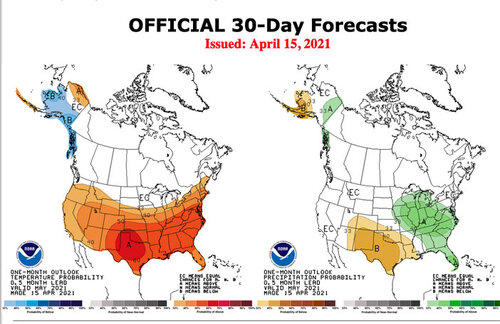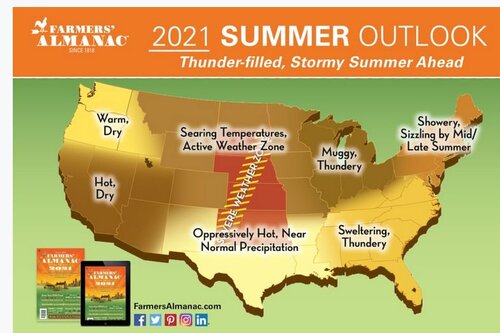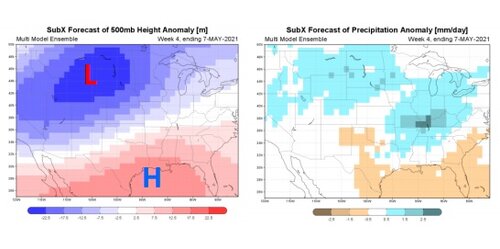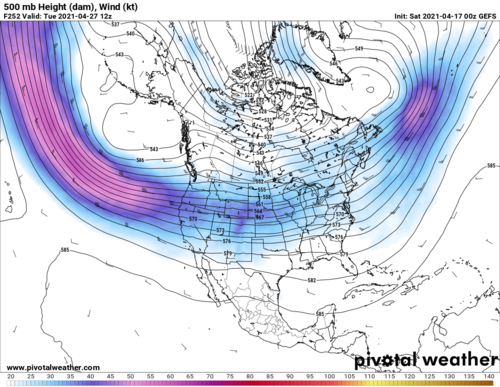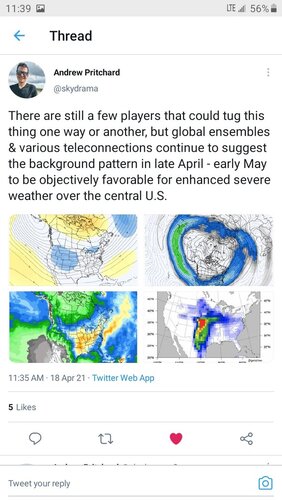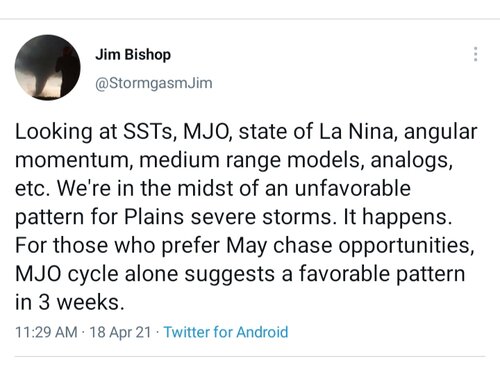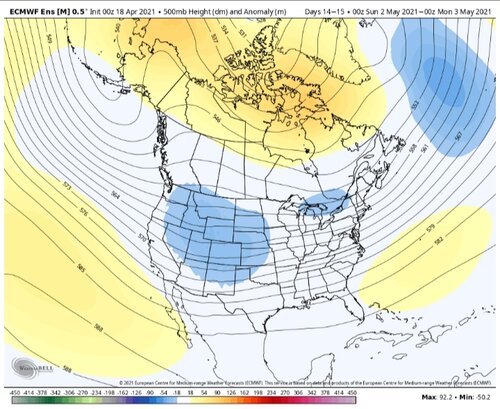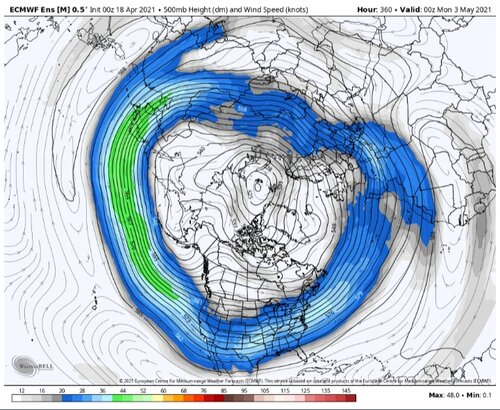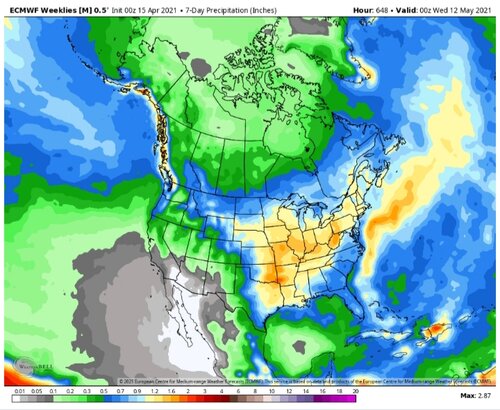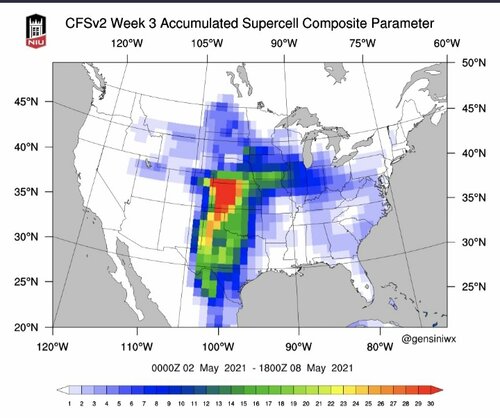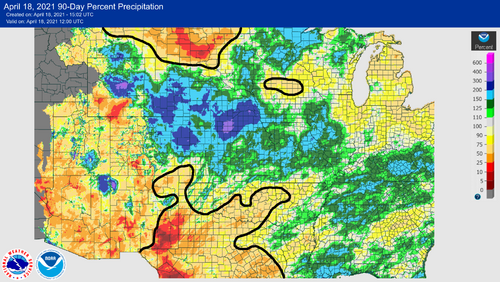Andy Berrington
EF2
Yeah that signal for the MJO to begin progressing across the Indian Ocean late this month into the first half of May is growing across all guidance, including bias corrected options. The current state favors eastern troughing and a generally cool pattern in spring (which is what we're seeing), but as can be seen in that North Pacific Phase diagram plot above, there is a growing signal for a cycle through an equatorward shift and jet extension towards the end of the month, which has been a precursor to extended periods of AA activity in the past. The addition of a recurving TC in the West Pacific adds another layer to this, which may provide a boost in westerly momentum across the Pacific.
The longevity of said AA period is still TBD, but seems to me that some interesting is coming here.
On top of the tropical forcing becoming more interesting, it seems this down period will not be completely fruitless, as medium range guidance consistently indicates widespread precip across the southern/central Plains thanks to embedded shortwaves in the southern stream, not overly dissimilar to what happened yesterday evening/overnight across Oklahoma. E.g. is the 12z ECMWF accumulated QPF output at FH 120 and 240 (half the period and the full period).

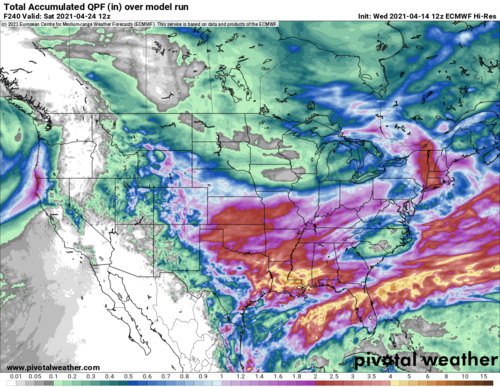
The longevity of said AA period is still TBD, but seems to me that some interesting is coming here.
On top of the tropical forcing becoming more interesting, it seems this down period will not be completely fruitless, as medium range guidance consistently indicates widespread precip across the southern/central Plains thanks to embedded shortwaves in the southern stream, not overly dissimilar to what happened yesterday evening/overnight across Oklahoma. E.g. is the 12z ECMWF accumulated QPF output at FH 120 and 240 (half the period and the full period).



